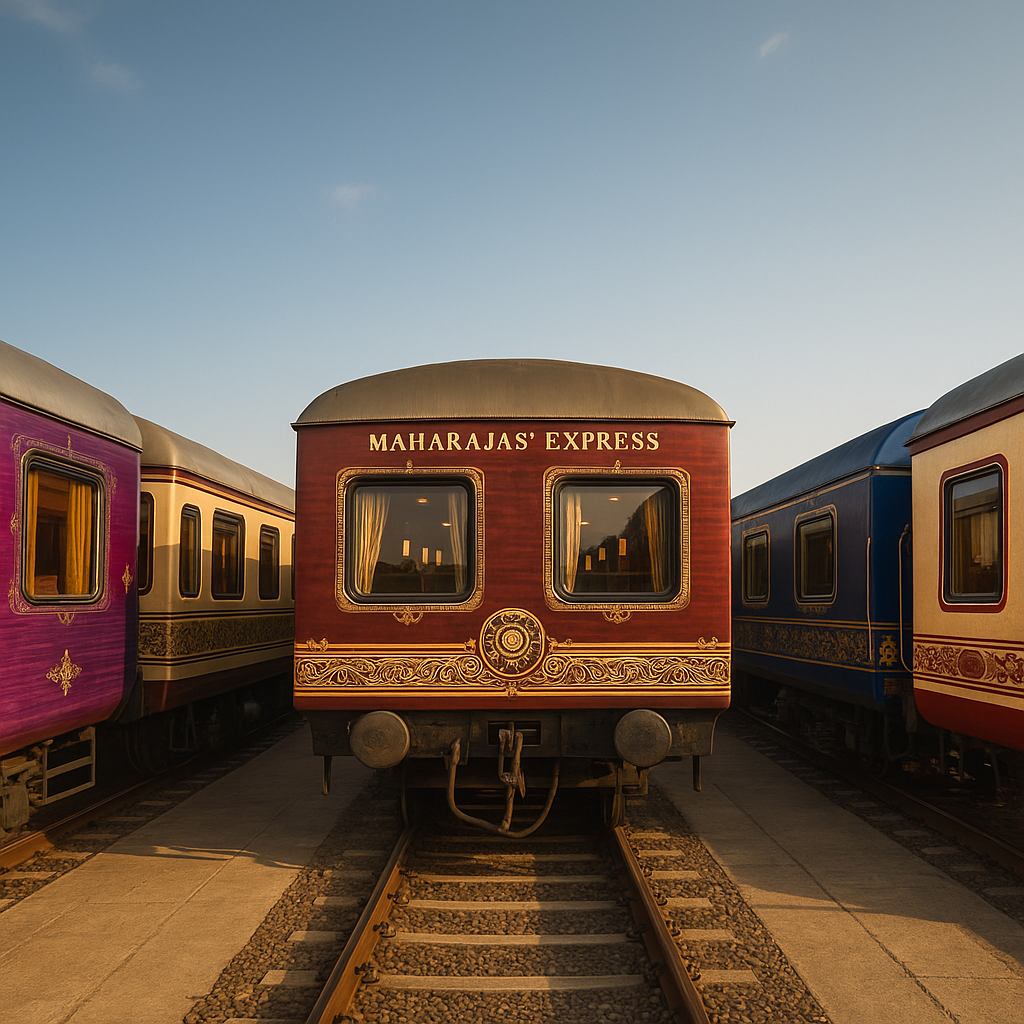India’s five luxury trains—Maharajas’ Express, Palace on Wheels, Deccan Odyssey, Golden Chariot, and Royal Rajasthan on Wheels—offer a rare blend of royal nostalgia, modern indulgence, and curated cultural journeys, making them icons of experiential travel.
A Journey Into Royal Nostalgia
Few experiences capture India’s opulence and history as vividly as its luxury trains. The Palace on Wheels, launched in 1982, remains the most iconic. Its coaches, once used by the maharajas of Rajasthan, are richly decorated with carved wood panels, ornate furnishings, and royal insignia. Passengers travel through Jaipur, Jodhpur, Udaipur, and Jaisalmer, stepping off to explore palaces and forts before returning to dining cars that echo the grandeur of princely courts. Similarly, the Royal Rajasthan on Wheels, introduced later, expands on this model by weaving in spiritual and cultural stops in Varanasi, Agra, and Khajuraho, combining royal heritage with broader explorations.
Modern Luxury Meets Indian Heritage
The Maharajas’ Express, often called the “world’s most luxurious train,” redefined expectations when it began service in 2010. With deluxe cabins, junior suites, and a full presidential suite spanning an entire carriage, it offers guests five-star comfort on tracks. Its restaurants, Mayur Mahal and Rang Mahal, serve gourmet meals with global and Indian flavors, while lounge bars provide refined leisure. The Deccan Odyssey, modeled after the Palace on Wheels, offers a different experience across Maharashtra and the Deccan plateau. With 21 coaches featuring spa facilities, a conference car, and two gourmet restaurants, it mirrors a modern hotel while carrying passengers through caves, coastal towns, and heritage sites.
South India’s Crown Jewel
While most luxury trains focus on North and West India, the Golden Chariot puts South India on the luxury map. Introduced in 2008, its purple-and-gold exteriors and Mysore Palace-inspired interiors combine Karnataka’s regal legacy with modern amenities like Wi-Fi, smart TVs, and a dedicated spa. Its routes cover UNESCO heritage sites like Hampi, Goa’s beaches, and Kerala’s backwaters, positioning it as a cultural showcase of southern India.
Beyond Travel: A Cultural Statement
These trains are not just about moving between destinations—they are curated journeys blending heritage, architecture, cuisine, and hospitality. They contribute significantly to India’s image as a destination for experiential travel, appealing to tourists who want more than conventional sightseeing. Even as the costs—often running into thousands of dollars per trip—place them out of reach for many Indians, they remain a potent reminder of the country’s royal traditions and a growing market for luxury tourism.


